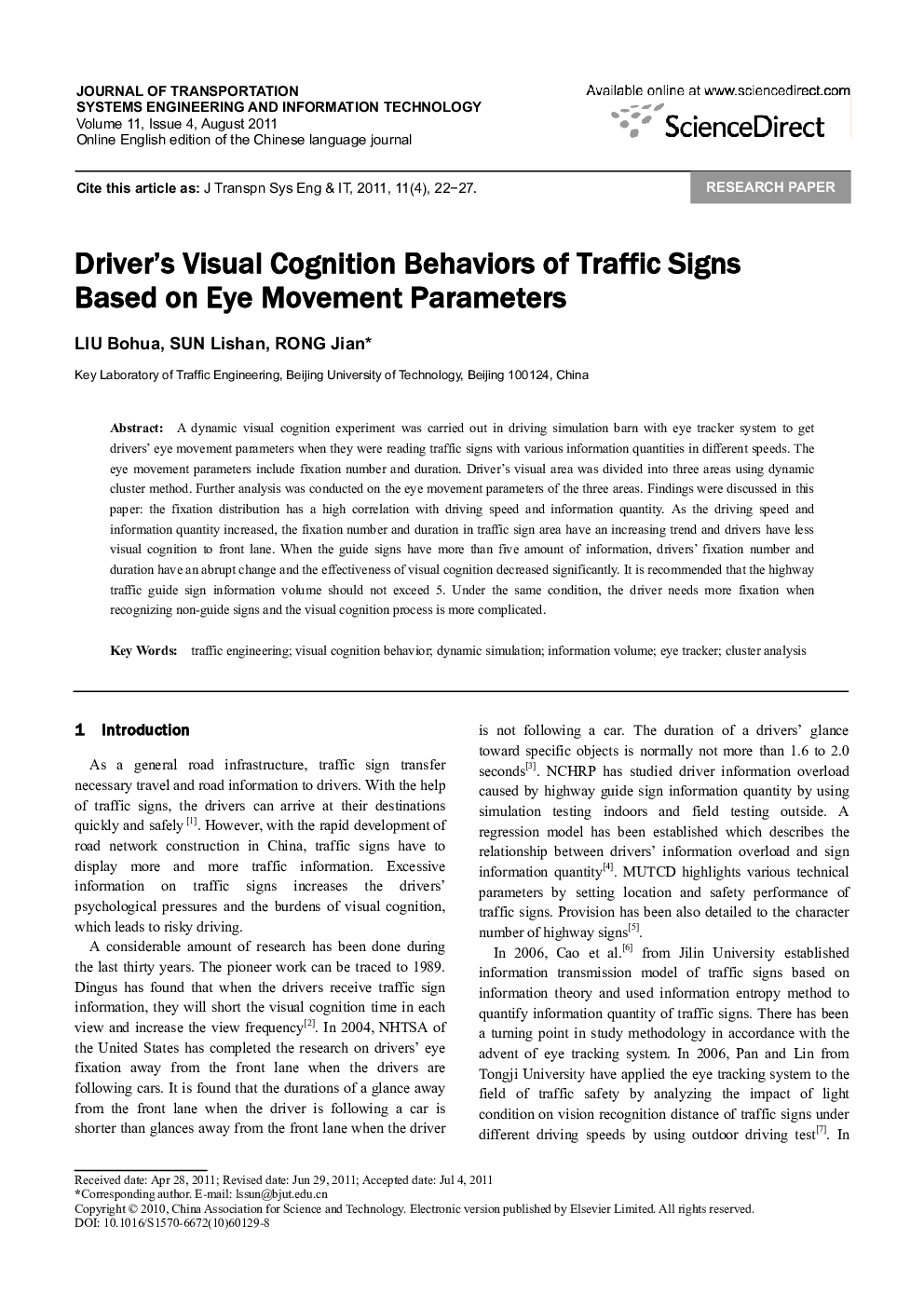| Article ID | Journal | Published Year | Pages | File Type |
|---|---|---|---|---|
| 108556 | Journal of Transportation Systems Engineering and Information Technology | 2011 | 6 Pages |
A dynamic visual cognition experiment was carried out in driving simulation barn with eye tracker system to get drivers' eye movement parameters when they were reading traffic signs with various information quantities in different speeds. The eye movement parameters include fixation number and duration. Driver's visual area was divided into three areas using dynamic cluster method. Further analysis was conducted on the eye movement parameters of the three areas. Findings were discussed in this paper: the fixation distribution has a high correlation with driving speed and information quantity. As the driving speed and information quantity increased, the fixation number and duration in traffic sign area have an increasing trend and drivers have less visual cognition to front lane. When the guide signs have more than five amount of information, drivers' fixation number and duration have an abrupt change and the effectiveness of visual cognition decreased significantly. It is recommended that the highway traffic guide sign information volume should not exceed 5. Under the same condition, the driver needs more fixation when recognizing non-guide signs and the visual cognition process is more complicated.
摘要通过驾驶员佩戴眼动仪在模拟舱中进行动态标志视认仿真实验,获得不同车速下驾驶员视认交通标志时的注视次数和注视时间。采用动态聚类方法将驾驶员的视野平面划分成3个区域,并统计分析各区域的眼动参数规律:驾驶员的注视点分布与车速及信息量的变化呈现高度的相关性,随着车速的提高以及信息量的增多,落在标志区域的注视次数和注视时间占总数的百分比呈递增趋势,驾驶员对于前方道路的注视则相应减少;信息量大于5个时,驾驶员的眼动参数出现突变,视认有效性显著降低,建议高速公路指路标志信息量以不超过5个为宜;同等情况下,驾驶员需要对非指路标志更多的注视,且视认过程也更加复杂。
